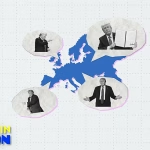Elon Musk recently unveiled Tesla’s much-anticipated robotaxi, the Cybercab, at an event in Burbank, California. The vehicle features a futuristic design with two wing-like doors and no pedals or steering wheel. Musk believes that fully self-driving vehicles will be safer than human-operated vehicles and could potentially generate income for owners by being rented out for rides. However, Musk’s prediction of production beginning before 2027 has raised doubts about the feasibility of his timeline.
During the event, Musk stated that the Cybercab would cost less than $30,000 and compete with rivals such as Waymo. Analysts have expressed skepticism about Tesla’s ability to offer the vehicle at that price within the specified timeframe without external subsidies or operating at a loss. Musk also mentioned plans to introduce fully autonomous technology in Tesla’s Model 3 and Model Y in Texas and California next year with regulatory approval, although safety concerns remain a significant obstacle.
Tesla’s self-driving strategy differs from many competitors by relying on cheaper cameras rather than radar and Lidar sensors. The company aims to use artificial intelligence trained by data collected from its vehicles to teach them to drive. However, questions linger within the research community about whether Tesla’s approach can provide reliable safety guarantees. The Cybercab project has faced delays, with the original release date in August being postponed due to design changes deemed necessary by Musk.
While competitors have already launched robotaxis on US roads, Tesla appears poised to experience its first annual sales decline as electric vehicle market competition intensifies. Despite this challenging landscape, the event showcasing the Cybercab was marked by spectacle, including humanoid robots serving drinks and dancing. Musk also revealed a prototype for a larger “Robovan” capable of transporting up to 20 passengers, hinting at potential future transport options for Tesla.
Attendees at the event expressed excitement about the innovative technologies presented by Tesla, with some analysts praising Musk’s vision for the future of transportation. However, doubts remain about the practicality and feasibility of fully realizing Musk’s ambitious plans. The deployment of robotaxis has faced setbacks, such as the suspension of General Motors’ Cruise driverless cars in San Francisco after an accident involving a pedestrian. Despite challenges, the sector continues to grow, with companies like Waymo, Uber, and Baidu expanding their autonomous vehicle initiatives beyond traditional markets.










